Exploring Bridgerton: Fashion and Cultural Influence
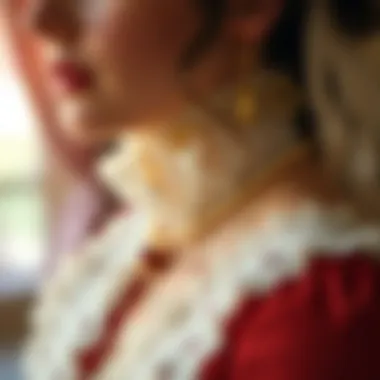
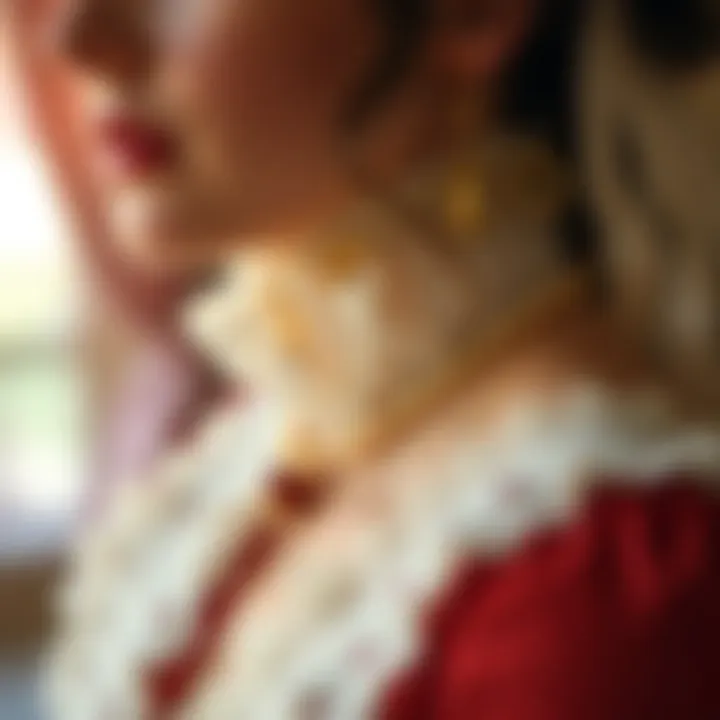
Intro
The world of Bridgerton unfolds like a beautifully wrapped gift, revealing layers of intricate designs and cultural narratives. From its captivating storytelling to the stunning visuals, the series has transformed the landscape of fashion and beauty norms in a remarkable way. Set against a backdrop of Regency-era society, it blends the old with the new, making its impact reach far beyond mere entertainment.
What stands out more than the drama between its characters is how the show plays with aesthetics. There is a textured relationship between the opulent costumes and modern trends that begs for exploration. Bridgerton goes beyond its period setting, challenging contemporary standards, and igniting discussions on inclusivity and beauty that are central to today's discourse. By disassembling these elements, this article aims to parse through the elegance, explore the deeper cultural threads that knit the past and present together, and analyze the show’s lasting influence on society.
Through the lens of fashion, culture, and impact, we shall embark on a detailed exploration of how Bridgerton has not only captured hearts and minds but has also set the stage for future conversations on identity, representation, and style.
Key Trends
In this section, we'll navigate the currents shaping contemporary fashion and beauty parallels drawn from the series. Let's dive in and highlight trends that have transcended through time, reemerging with newfound relevance.
Overview of Current Fashion Trends
Fashion today often reflects the melodies of various past eras, with Bridgerton playing a pivotal role in this revival. One key trend is the emphasis on opulent fabrics and bold colors that mirror the lavish wardrobes of the show. Luxurious textures like silk and brocade have made their way into modern collections, showing that vintage can be chic and relevant. Additionally, voluminous sleeves and high necklines are making a comeback, influencing brands to adopt these timeless silhouettes for contemporary fashionistas.
- Bold Color Palettes: From pastel shades to vibrant hues, color is key in embodying the spirit of opulence.
- Romanticism in Design: Ruffles, lace, and layering take center stage, allowing for personal expression while nodding to historical influence.
- Inclusivity Across Brands: Women of all shapes, sizes, and backgrounds are being celebrated in ad campaigns, inspired by the diversity showcased in Bridgerton.
Popular Beauty Trends
Beauty standards are also shifting in light of Bridgerton. The show has reignited interest in natural beauty while promoting unique elements that allow individuals to express themselves authentically. Here are notable trends making waves:
- Glowing Skin: The quest for that dewy finish has many turning to highlighters and illuminators, echoing the Bridgerton glow.
- Soft Glam Makeup: This minimalistic approach focuses on enhancing one’s features without overwhelming them. Think soft eyes and rich lip colors.
- Diverse Representation: The beauty industry has expanded its horizons regarding skin tones and textures in product offerings, embracing the idea that beauty is diverse and multifaceted.
"Fashion and beauty have this beautiful ability to adapt and transform, much like the characters of Bridgerton. It’s about making history relevant to today’s conversations."
With all these elements woven into health and beauty discussions, the impact of Bridgerton goes beyond what is seen on screen, influencing real-life choices in wardrobes and self-presentation.
Foreword to Bridgerton
The world of Bridgerton has captivated audiences around the globe, turning heads not only through its gripping storytelling but also through its stunning visuals and intricate fashion. This series, based on Julia Quinn's novels, transports viewers to the Regency era, a time of opulence and social sophistication. Delving into the aesthetics of Bridgerton is not merely an exercise in understanding historical costumes; it sheds light on modern interpretations of beauty and style, resonating with diverse audiences in unique ways.
In considering the various layers of Bridgerton, one must acknowledge the craft behind weaving together intricate narratives with visual splendor. The fashion choices of characters reveal much about their personalities, societal standings, and the larger cultural implications at play. Just like how a fabric can speak volumes about a period, the series itself invites discussion on both its philosophical and artistic impact.
The exploration of this topic enhances our understanding of how modern contexts can be enriched by historical aesthetics. Bridgerton serves as a bridge between its 19th-century inspirations and contemporary viewers, prompting fresh conversations about identity and expression. This series urges audiences to reflect upon their own perceptions of romance and social status, making the examination of its components essential for a comprehensive understanding of its significance today.
Overview of the Series
Bridgerton first graced our screens in December 2020, launched by Netflix to immediate acclaim. Set against the picturesque backdrop of Regency-era England, the show revolves around the lives of the Bridgerton family and their interactions within the high society of London. Each season focuses on a different sibling's romantic journey, often colored by their own conflicts and societal expectations. The series is renowned for its lush cinematography, captivating score, and of course, its vibrant fashion.
At its core, Bridgerton is as much about love as it is about the complex interplay of class and personal aspirations. The prologue sets the tone, introducing Lady Whistledown, a sharp-witted gossip columnist whose publications shape the lives and reputations of the characters within this romanticized world. Through her observations, the audience gains insight into the nuances of society, courtship processes, and the stakes involved in love during this period.
Cultural Significance
The cultural significance of Bridgerton extends far beyond its entertainment value. The show plays a pivotal role in how we view and engage with historical narratives, as it reframes Regency norms through a modern lens. With its commitment to diversity, Bridgerton challenges traditional casting practices of period dramas, showcasing characters of various ethnic backgrounds. This bold choice not only enriches the narrative but also highlights the importance of representation in media.
Moreover, Bridgerton emphasizes that beauty and identity are fluid concepts, shaped by and shaping society's norms. As the characters navigate their desires, viewers witness how those journeys reflect contemporary struggles around self-expression and acceptance. This series encourages discussions around love that transcend time—a key thematic element that resonates in today's society.
"In Bridgerton, romance is a spectrum, not a destination, making it relevant for viewers at any age or stage of life."
The intersection of fashion, culture, and identity presented in Bridgerton lays the groundwork for redefining modern beauty standards, challenging established notions, and prompting audiences to question who gets to tell stories from history. As the series continues to gain traction, its cultural implications will resonate for years to come, leaving a lasting legacy on discussions of aesthetics and representation.
Bridgerton Fashion: A Closer Look
The fashion depicted in Bridgerton is not simply eye candy; it's a well-crafted tapestry that reflects social dynamics, personal identities, and enduring aesthetic values of a bygone era. By examining the wardrobe choices made by characters throughout the series, we gain insight into how attire serves as a language of its own, articulating everything from status and ambition to rebellion and romance. This section digs into the significant aspects of Bridgerton's fashion, underscoring why this facet of the series plays a paramount role in shaping audiences' understanding of its cultural resonance.
Character Wardrobes and Personal Style
In Bridgerton, each character's wardrobe serves as an extension of their personality. For instance, Daphne Bridgerton, portrayed as the archetypal debutante, is often clad in soft pastels, embodying grace and purity. Her dresses, which highlight delicate fabrics like silk and lace, echo her aspirations and status within the Bridgerton family. In contrast, Eloise Bridgerton exemplifies a more modern take on femininity, donning slightly more practical yet equally fashionable attire that suggests her independent spirit.
Moreover, Simon Basset’s attire tells a compelling narrative as well; his tailored jackets and darker hues reflect his complexity, not just as a duke but also as a man wrestling with his inner tumult. The character’s sartorial choices carry depth, revealing how clothing can play a pivotal role in storytelling.
Impact of Regency Fashion
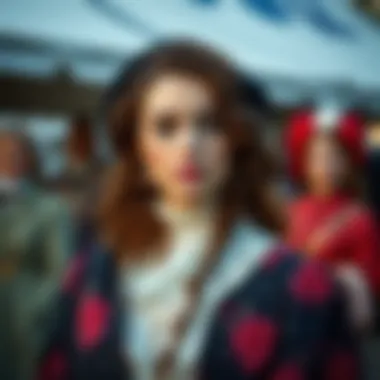
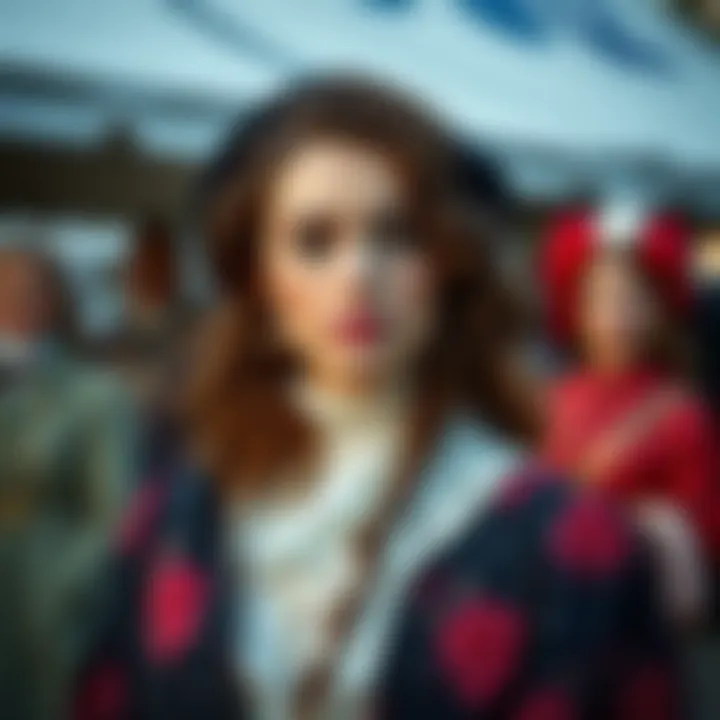
The influence of Regency fashion as presented in Bridgerton extends far beyond its visual appeal; it beckons a return to elegance in a world often overtaken by minimalist aesthetics. Regency clothing allows for dynamic movement and evinces a sense of freedom that starkly contrasts with the corseted silhouettes of earlier centuries. The show’s designers meticulously researched styles from the period, blending historical accuracy with modern tastes. This revival of Regency aesthetics has spurred interest among contemporary designers, inspiring collections that integrate elements from the series into modern wardrobes. The looks from Bridgerton cleverly balance nostalgia with contemporary relevance, ensuring that the trends do not merely linger in the realm of costume but find their way onto today’s catwalks.
Color Palettes and Fabric Choices
One cannot discuss the fashion in Bridgerton without paying attention to the striking color palettes and fabric choices. The show employs a rich array of colors which include soft lavender, muted blues, and vibrant greens. These hues serve not just as aesthetic choices but also convey subtle character traits and thematic elements. For example, bright colors often signal youthful exuberance or optimism, while darker shades may underscore complexity or conflict.
Furthermore, the fabric selections play a critical role in defining the visual identity of the series. Luxurious materials such as velvet, taffeta, and organza are commonly used, evoking a sense of opulence and refinement. The careful selection of these materials aligns with how the narrative fosters an admiration for detail and indulgence, all while acknowledging the historical context of Regency-era craftsmanship.
Through color and texture, Bridgerton invites its viewers to appreciate the artistry behind garments crafted in an earlier century, encouraging a deeper dialogue about how fashion can transcend time.
"Fashion is the armor to survive the reality of everyday life." - Bill Cunningham
Character Analysis and Their Influence
Understanding the characters in Bridgerton is pivotal not only for appreciating the narrative but also for dissecting the deeper cultural implications they carry. Each character serves as a vessel, reflecting societal norms and the evolving landscape of fashion and identity. Through this analysis, we can explore how these personas engage viewers and challenge perceptions of culture, class, and femininity. By diving into the individual journeys of characters like Daphne, Simon, and Eloise, we unravel the threads that stitch together not just their stories, but the broader societal themes they represent.
Daphne Bridgerton: The Quintessential Debutante
Daphne Bridgerton is portrayed as the epitome of the Regency-era debutante, encapsulating the essence of beauty, grace, and societal expectations. As the eldest daughter of the Bridgerton family, she faces the immense pressure to marry well while navigating the complexities of social status and personal desires. Her wardrobe, characterized by soft pastels and intricate details, not only emphasizes her youth but also symbolizes the limited roles available to women of her standing.
Daphne's journey through the series is marked by key moments that flesh out her character. Her initial naivete transitions into a more profound understanding of love and partnership, particularly highlighted in her relationship with Simon Basset. The struggles and triumphs of Daphne emphasize themes of agency, exploring how a woman of her era maneuvers through the expectations placed upon her. Ultimately, her story challenges the stereotypical notions of femininity, quietly urging viewers to reconsider the roles women play in love and society.
Simon Basset: Heritage and Identity
Simon Basset offers a counterpoint to Daphne, representing a complex interplay of heritage and identity. As the Duke of Hastings, his character grapples with familial expectations and personal demons. The series paints Simon as a brooding, enigmatic figure, yet his struggles with identity, caused by his turbulent childhood, render him relatable to viewers. His journey is not just about romance but reflects broader themes of self-acceptance and the burdens of lineage.
In discussing Simon’s character, it’s important to analyze his style as well. His sharp, tailored suits signify power and control, contrasting sharply with Daphne's ethereal gowns. This difference in attire speaks volumes about the dichotomy of their experiences—while both characters face societal pressures, their responses are shaped drastically by their backgrounds. Simon's battle with his past resonates with many viewers, bringing forth discussions on how heritage influences our present selves and partnerships.
Eloise Bridgerton: Modern Feminism
Eloise Bridgerton emerges as a breath of fresh air amidst the societal constraints of her time. As a progressive thinker, her character embodies themes of modern feminism. Refusing to conform to the expectations of debutante life, Eloise is more focused on her pursuit of knowledge and independence. Her wit and intelligence shine through as she questions the norms surrounding marriage and gender roles, making her a relatable icon for today’s audience.
Eloise's fashion choices also differentiate her from her peers. Opting for practical yet stylish ensembles, she navigates the challenge of expressing individuality in a world that prizes conformity. Her character opens up discussions about the evolving roles of women in society and how personal style can be an act of defiance. Through Eloise, Bridgerton taps into the ongoing conversation around feminism, encouraging viewers to reflect on the freedoms and limitations experienced by women across generations.
"In Bridgerton, characters don’t just wear costumes; they embody ideals, resistant histories, and the tenacity for change."
By examining these three characters, we gain insight into how Bridgerton crafts a narrative that resonates with contemporary themes while staying rooted in its historical backdrop. Each character’s journey highlights unique challenges and aspirations, showcasing the series' relevance in today's discussions about beauty, identity, and societal roles.
For further reading:
Bridgerton’s Influence on Modern Beauty Standards
The lavish world of Bridgerton has woven itself into the very fabric of modern beauty standards, impacting how women perceive themselves and their aesthetics today. With its opulent costumes, graceful characters, and diverse representation, the series incites reflections on beauty that transcend mere physical appearance. It presents a platform where historical elegance meets current realities, challenging and reshaping contemporary ideals. This multi-layered influence reminds us that beauty is not static; rather, it is a dynamic conversation that evolves with cultural narratives.
Makeup Trends Inspired by the Show
One cannot discuss the makeup revolution stirred by Bridgerton without shedding light on the ethereal charm it conveys. The makeup styles showcased throughout the series draw heavily from the Regency era but are tailored for today's audience. The radiant, natural look has emerged as a favored trend, emphasizing glowing skin, soft blush, and a hint of shimmer on the eyes.
- Glowing Complexion: The series promotes a dewy finish as a hallmark of beauty. Using products like tinted moisturizers or illuminating foundations can help anyone achieve that radiant glow that Daphne and Penelope so famously sport.
- Subtle Eyes: The use of earthy tones and soft pastels reflects the understated elegance of the period. Think cream and bronze shades that create depth while steering clear of heavy eyeliner, echoing the series’ emphasis on refinement.
- Emphasized Lips: While the focus is often on the eyes, luscious lip colors ranging from soft pinks to deeper mauves allow for a touch of glamour. The key is to enhance, not overpower.
These elements are becoming mainstream, influencing makeup brands to release collections inspired by the aesthetics of the show. Palettes and products marketed under the banner of Bridgerton have been flying off the shelves, as fans clamor to embody the grace and sophistication visible on screen.
Hairstyles and Their Historical Context
Hair in Bridgerton serves not just as a fashion statement but as a key narrative device that speaks volumes about character and societal status. Each hairstyle reflects historical context while simultaneously being reimagined for contemporary audiences. In the series, the hairdos range from the intricate updos adorned with pearls and accessories to the gentle waves that mimic natural movement.
- The Classic Updo: Characters like Daphne showcase sophisticated buns and chignons that were emblematic of higher social standing during the Regency period. With the resurgence of this style today, modern interpretations often include loose tendrils framing the face for a softer approach.
- Romantic Waves: The effortless beachy waves sported by Eloise resonate with the modern desire for less rigid styling, promoting a sense of freedom and beauty unbounded by societal constraints. It signifies that beauty doesn’t always have to conform to strict rules.
- Accessories: Ribbons and floral elements that were chic in the past are finding their way into contemporary fashion. Headbands, pins, and even fresh flowers echo the Bridgerton aesthetic while allowing individuals to express their personal style.
The impact of these hairstyles is clear; they evoke nostalgia while simultaneously encouraging feminism and self-expression in beauty. As seen on various platforms like Instagram and Pinterest, women of all ages are experimenting with hairstyles reminiscent of the grandeur depicted on Bridgerton, combining a historic appreciation with a modern twist.
It is the delicate balance of honoring traditional aesthetics while merging them with modern sensibilities that illustrates the ongoing evolution of beauty standards influenced by series like Bridgerton.
By showcasing how beauty transcends time and is fluid in nature, Bridgerton has not only entertained audiences but has also significantly impacted how beauty is perceived and experienced in modern society.
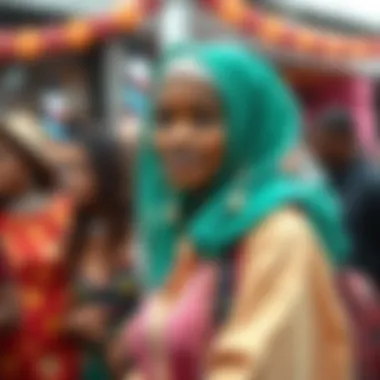
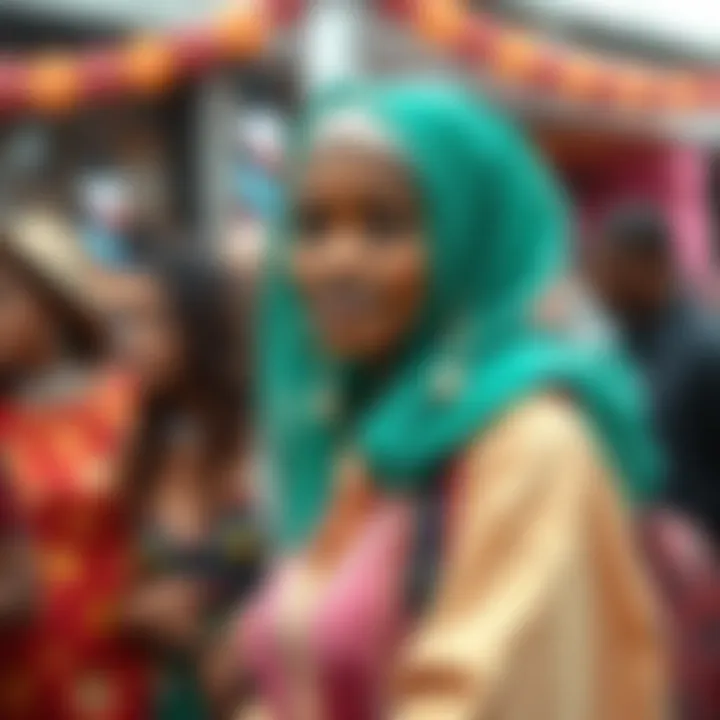
The Role of Diversity in Bridgerton
Exploring the role of diversity in Bridgerton opens up a fascinating conversation surrounding representation in media and how it resonates with modern audiences. The series, which presents a reimagined Regency-era London, challenges traditional narratives by integrating a diverse cast, thereby offering more than just escapism. Instead, it fosters an environment where dialogue about identity, race, and societal norms can flourish.
Casting and Representation
The casting choices in Bridgerton breathe new life into historical storytelling. By featuring actors of different ethnic backgrounds in roles traditionally reserved for white characters, the show advocates for inclusion in a space that often overlooks such narratives. This meticulous approach to casting underscores a significant shift in how we perceive historical figures and their stories.
Bridgerton doesn't shy away from addressing race. For example, Simon Basset, portrayed by Regé-Jean Page, serves as a central character whose heritage is explored with sensitivity. By featuring characters of color in positions of influence and authority—a Duke, no less—the series invites viewers to rethink the limitations imposed by historical accuracy. It poses the question of who gets to be part of history and challenges the programming that has dominated our view of the past.
This commitment to diversity extends beyond mere representation. It enriches character development, allowing audiences to connect with complex identities that reflect the real world. For audiences, especially women of color, seeing faces that look like theirs on screen can feel like a breath of fresh air, bringing a sense of belonging often absent in period dramas.
Impact on Social Norms
The social implications of diversity in Bridgerton reach far beyond the confines of the screen. By normalizing characters of various backgrounds within a prestigious society, the show contributes to shifting social norms around race and class. This new narrative framework encourages viewers to engage with historical contexts while also recognizing the complexities of contemporary dialogue about race.
The impact is profound:
"Representation has power. It not only empowers those who see themselves in roles but also shapes the perceptions of those who might find it difficult to relate to diverse narratives."
The discussions stemming from these portrayals have catalyzed conversations about privilege, bias, and equity, nudging society toward a more inclusive mindset. In essence, Bridgerton serves not just as entertainment; it becomes a catalyst for social reflection, where viewers can critically assess their biases and the world around them.
The embrace of diversity within Bridgerton signifies more than a shift in casting; it paves the way for future narratives that reflect the true tapestry of society. The attention drawn to casting and social constructs allows the series to serve as a model for how creativity can challenge the status quo and inspire change.
As we look ahead, the enduring legacy of Bridgerton will likely continue to influence both fashion and societal perceptions of beauty, identity, and acceptance.
Recreation of a Historical Era
The recreation of a historical era in Bridgerton serves not only as a backdrop for the narrative but also as a critical fulcrum that balances the aesthetics of storytelling and character development. The series is artfully crafted to transport viewers to the Regency period while intertwining modern sensibilities. This blend of history and contemporary themes offers a distinctive experience, allowing audiences to both escape into a vibrant past yet still relate to the layered complexities of love, social stratification, and identity.
In the age of reboots and adaptations, getting the essence of a bygone era right is no small feat. The challenge lies in staying true to the historical context while also reimagining it in a way that resonates with today’s audience. This involves a careful study of clothing, social customs, and even language from the Regency period, combined with a sprinkle of artistic license that keeps viewers enthralled.
Costume Design Insights
Costume design in Bridgerton is like an exquisite tapestry weaving together threads of historical accuracy and creative flair. The primary aim of the costumes is to not just reflect the societal norms of the early 19th century, but also to express individual characters’ personalities. For instance, Daphne Bridgerton’s gowns often feature softer colors, embodying her innocence and the traditional virtues of a debutante. Conversely, characters like Lady Danbury exhibit a more vibrant and assertive palette that signifies their strength and independence.
“Costuming is storytelling through fabric and form.”
In this regard, the costume designers took meticulous steps to ensure that each outfit not only serves the plot but enhances the character’s journey throughout the series. Sourcing luxurious materials and contractor with skilled artisans allowed for a resplendent display of Regency fashion, from the delicate lace to the intricate beadwork. Additionally, these choices open up dialogues about beauty standards and body representation, showcasing a range of sizes and styles that reflect modern diversity while respecting historical authenticity.
Set Design and Atmosphere
While costumes are central to the visual narrative, the set design in Bridgerton plays an equally important role in recreating a historical era. The opulent interiors rival even the grandest of estates, with each room curated to showcase the wealth and status of the Bridgerton family and their peers. Elaborate chandeliers, vintage wallpaper, and sumptuous drapes encapsulate the elegance of the period, inviting viewers to immerse themselves fully in the world being portrayed.
The use of colors and light throughout the sets enhances the overall mood and signifies shifts in plot dynamics. The palatial feel is often contrasted with more intimate settings that explore personal struggles and relationships. This dynamic creates a rich atmosphere that mirrors the highs and lows of Regency life, encapsulating not just the grandeur, but also the emotional landscape of the characters.
In both costume and set design, Bridgerton breathes life into a historical era, inviting a dialogue that extends far beyond the screens. By marrying carefully researched elements with modern aesthetics, the show doesn’t merely recreate history; it reinvents it, making past influences feel vibrantly relevant today.
This successful marriage of historical detail with contemporary artistry also opens doors for future narratives in fashion and culture, encouraging creators to delve into historical stories while keeping a fresh perspective. The result is a vivid spectacle that honors the history it depicts.
It is this thoughtful recreation of a historical era that makes Bridgerton not just a show, but a cultural phenomenon that continues to influence fashion and beauty standards.
Societal Themes Explored in Bridgerton
In the splendid world of Bridgerton, societal dynamics manifest vividly through its plotlines and character interactions. The exploration of themes such as love, marriage, class, and social mobility provides a critical lens through which audiences can scrutinize their own reality. Not only does this series entertain, but it also sparks valuable discussions around deep-rooted issues that remain pertinent today. By laying out these themes, the show positions itself as a reflective surface for its viewers, highlighting the contrasts and similarities between the historical context and contemporary life.
Love and Marriage Dynamics
The romantic entanglements within Bridgerton do more than provide a backdrop for drama; they serve as a commentary on love and the institution of marriage. Characters find themselves navigating societal expectations and personal desires, often at odds with one another. At the heart of the narrative lies the idea that love can be multifaceted—true love, societal duty, and practical arrangements all intermingle in a way that resonates with viewers.
The relationships explored in Bridgerton depict a spectrum of love. For instance, Daphne's journey showcases the evolution from an arranged marriage to a foundation built on mutual respect and understanding. Conversely, characters like Lady Danbury challenge the conventional notions of companionship. She represents independence and defies societal norms, indicating that fulfillment can stem from sources beyond romantic relationships.
"In a world where societal pressures dictate choices, Bridgerton reminds us that the heart often seeks its own path."
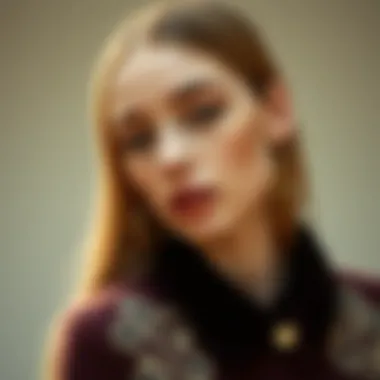
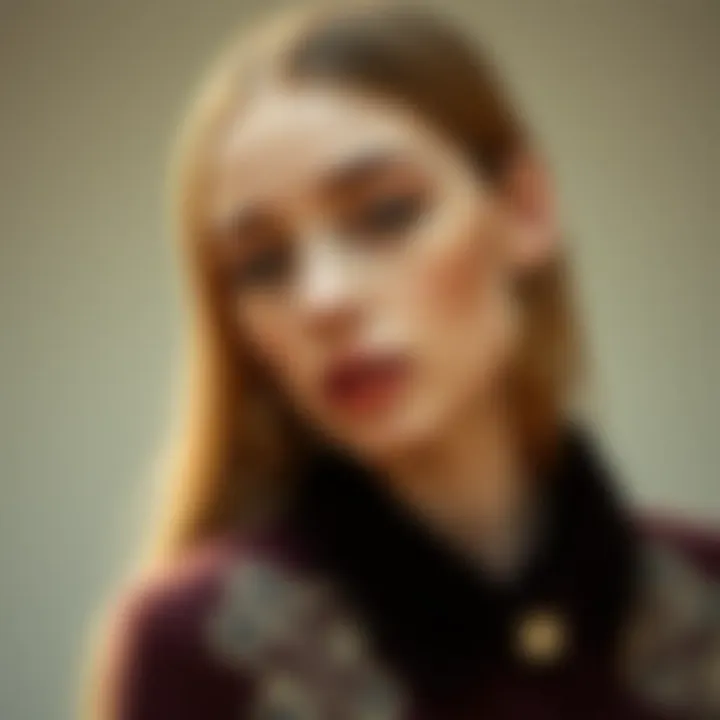
Moreover, the show's portrayal of courtship rituals emphasizes how love operates within the constraints of society. The Season, with its balls and gatherings, presents a highly organized arena where one's social capital can influence marital outcomes. This leads to reflections on how contemporary dating cultures might mirror some of these historical norms, reminding audiences of the pressures still at play in modern relationships.
Class and Social Mobility
The intricate dance of class and social status forms another critical theme in Bridgerton. The show possesses a unique ability to portray the rigid class structures of Regency England while subtly hinting at the possibilities for social mobility. Characters like Simon Basset, the Duke of Hastings, shine a light on the ongoing struggles of those wishing to break free from societal shackles.
Social stratifications are palpable, showcased through the varied reactions to the Featherington family's changing fortunes and the conflicts faced by characters who seek to rise above their birthright. For instance, Eloise Bridgerton embodies a yearning for independence, seeking to carve her own place in a society that often confines women to traditional roles. Her ambitions and desire for knowledge challenge the status quo, captivating viewers who share similar modern aspirations.
By illustrating these class disparities, Bridgerton provides a dual commentary: on one hand, it romanticizes the era's excesses and elegance, while on the other, it calls into question the fairness of a system that inherently favors a select few. The show prompts viewers to critically assess their own societal frameworks and consider how they, too, navigate the often-choppy waters of class and opportunity.
In summary, the societal themes in Bridgerton—including love dynamics and class mobility—not only shape its narrative but also serve as crucial touchstones for understanding human experience across ages. As audiences witness these themes unfold, they are encouraged to reflect on their own lives, revealing the intricate ties between past and present.
Critiques of the Show
In any cultural phenomenon, it’s the critiques that often provide the most substantial insights into its impact. This section will explore two pivotal critiques of Bridgerton: the balance between historical accuracy and artistic storytelling, and the portrayal of women within its narrative. Both elements play a significant role in shaping the show's perception, providing valuable discussions around socio-cultural representation and how it resonates or conflicts with reality.
Historical Accuracy vs. Artistic License
Bridgerton dazzles with its lush visuals and storytelling, but one cannot help but wonder where artistic embellishment begins and historical accuracy ends. While the series sets itself in the Regency era, it often strays into territories that might leave historians shaking their heads. The bright pastels of the costumes and the modern sensibilities embodied by characters create anachronistic vibes.
"It gives a fairy tale quality that contrasts sharply with the realities of the time. It’s like mixing champagne with lemonade—delicious, but perhaps not the most historically accurate choice!"
Consider the portrayal of social dynamics and gender roles. For example, women in the Regency period had more limitations compared to the spirited depictions in the show. In reality, marriage was often about alliances rather than love, a fundamental aspect glossed over for a contemporary audience craving romance. It raises the question: Should a show like Bridgerton prioritize engaging storytelling over strict adherence to historical truth? This tension reflects a broader debate in media about how history should be represented.
Female Representation and Stereotypes
In Bridgerton, women are depicted as both strong and complex, but one must critically examine how these characterizations play out. Eloise Bridgerton is a prime example of a modern feminist voice within a historical context, embodying ideas of independence and self-discovery. However, such representations often teeter on the edge of stereotypes.
Daphne Bridgerton, initially presented as a compliant debutante, later evolves, yet one cannot ignore how her character journey reflects societal expectations. On one hand, the series highlights women's desires for agency; on the other hand, it sometimes leans back into tropes, portraying women primarily in relation to their romantic entanglements.
As viewers engage with these narratives, it’s essential to ask how these representations are received by a 21st-century audience. Do they empower women or simply repackage age-old stereotypes? By scrutinizing both the positive strides and the setbacks in how women are portrayed, we can better understand the cultural implications of Bridgerton. It invites discourse on more substantial questions of representation and the evolution of female characters in media.
As we navigate through the critique of Bridgerton, it’s clear that while the show charms with its aesthetics, the underlying discussions regarding historical context and representation provide a richer narrative to examine. Through these lenses, audiences can gain profound insights into not only the show itself but also the intricate dance between art and reality in modern storytelling.
Bridgerton’s Legacy in Fashion and Beauty
Bridgerton has made substantial waves in the fashion and beauty sectors, carving out a legacy that is hard to ignore. With its historical context serving as a backdrop, the series has not only revived Regency-era aesthetics but also infused it with a contemporary flair that resonates well with modern audiences. This blend of the past and present underscores the importance of Bridgerton in discussions around fashion and beauty standards today.
What sets Bridgerton apart is its ability to make history feel fresh and relatable. By translating the grandeur of the Regency era into styles that appeal to today's viewers, it allows for a deeper examination of both historical and current beauty ideals.
Lasting Trends from the Series
The fashion from Bridgerton has sparked various trends that can be felt across multiple sectors, from high fashion runways to everyday wardrobes. Some key trends that have emerged include:
- Pastel Color Palettes: The series has popularized soft hues that evoke a sense of nostalgia while still feeling modern. Soft pinks, light blues, and gentle yellows have popped up in both fashion collections and home decor.
- Regency-Inspired Silhouettes: High-waisted dresses with flowing fabrics have made a comeback. This kind of silhouette not only flatters various body types but also brings comfort, which today's fashion-conscious individuals crave.
- Bold Accessories: The characters often sport eye-catching jewelry and hair pieces, reigniting interest in statement accessories like ornate hairpins and layered necklaces.
As a result, new brands and established ones alike have jumped on these trends, giving birth to collections that pay homage to the Bridgerton aesthetic. For instance, several brands now offer dresses inspired by those seen on characters like Daphne or Eloise, and beauty products are leaning heavily into pastel shades and natural looks reminiscent of the show.
Future Implications for Women’s Fashion
Looking forward, the legacy of Bridgerton is poised to influence women’s fashion in a variety of ways. It’s essential to highlight some potential implications that go beyond mere aesthetics:
- Reevaluation of Femininity: The show opens up dialogues around femininity and what it can look like in modern contexts. Women are increasingly embracing styles that blend power with grace, which could lead to more diverse representations in fashion.
- Inclusivity in Design: The series' focus on diversity in casting might inspire fashion houses to consider inclusivity not merely as a requirement but as a foundational element in their designs. This can drive more extensive size ranges and styles that cater to a broader audience.
- Sustainable Practices: As past styles are integrated into contemporary wardrobes, there’s a chance for a greater emphasis on sustainability. Reproducing classic styles with eco-friendly materials could become a standard practice in the industry.
In summary, Bridgerton has made its mark on fashion and beauty in a palpable way. The trends it has initiated and the broader themes it evokes serve as a springboard for future discussions and developments within the industry. It seems safe to say that this dazzling world has forever altered how we view beauty and style, sparking conversations that weave together the threads of history and modernity as they continue to evolve.
The End: Bridgerton’s Cultural Resonance
As we reach the conclusion of our exploration into the aesthetic landscape of Bridgerton, it is essential to reflect on the profound cultural resonance that this series embodies. A narrative that marries historical intricacies with modern sensibilities, Bridgerton does more than simply entertain; it acts as a mirror reflecting the values, aspirations, and complexities of contemporary society. The show's impact is multifaceted, with particular emphasis on its approach towards fashion, representation, and societal themes.
The show’s striking visuals and carefully curated wardrobe choices not only celebrate the elegance of Regency-era fashion but also challenge traditional beauty norms. In a world increasingly aware of diversity and identity, Bridgerton has raised the bar on how characters of varying backgrounds are represented, throwing into sharp relief the importance of inclusion in the media.
When we ponder the unique benefits of this cultural phenomenon, several elements come to mind:
- Reinvigoration of Fashion: Bridgerton has sparked renewed interest in historical fashion, inspiring both designers and fashion enthusiasts. The sumptuous fabrics, enchanting silhouettes, and vibrant colors observed in the series have influenced contemporary trends, urging people to adopt elements from the past into their daily wardrobe.
- Diversity and Representation: The casting choices made for the series have created a space where conversations about race, heritage, and class can unfold. By reframing narratives around love and relationships within diverse contexts, Bridgerton allows viewers to reexamine their notions of identity and belonging in a more inclusive light.
- Cultural Critique: The series doesn’t shy away from addressing pertinent social issues, such as class dynamics and the evolving roles of women in society. It provides a platform for discussions that resonate well beyond the screen, making viewers reflect on their own realities.
"Bridgerton is not just a tale of romance; it's a discourse on identity, beauty, and the shifting sands of society's norms."
In turning the lens onto current cultural dialogues, Bridgerton has effectively ensured that its legacy will not merely be about opulent gowns or serialized romance but also about how these elements intersect with larger societal conversations. As the world continues to change, the lessons embedded in the series about understanding and embracing diversity, redefining aesthetics, and challenging societal structures will likely remain relevant.
In sum, Bridgerton serves as a continually evolving cultural artifact, reminding us of the enduring power of storytelling and its ability to shape perceptions and drive conversations across generations. By reflecting on fashion and beyond, we find ourselves at a crossroads of history and modernity, making Bridgerton a significant subject of study well into the future.



